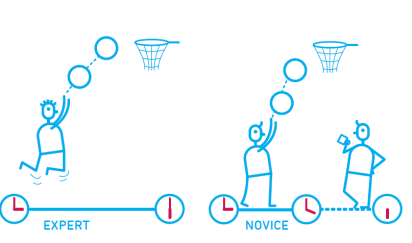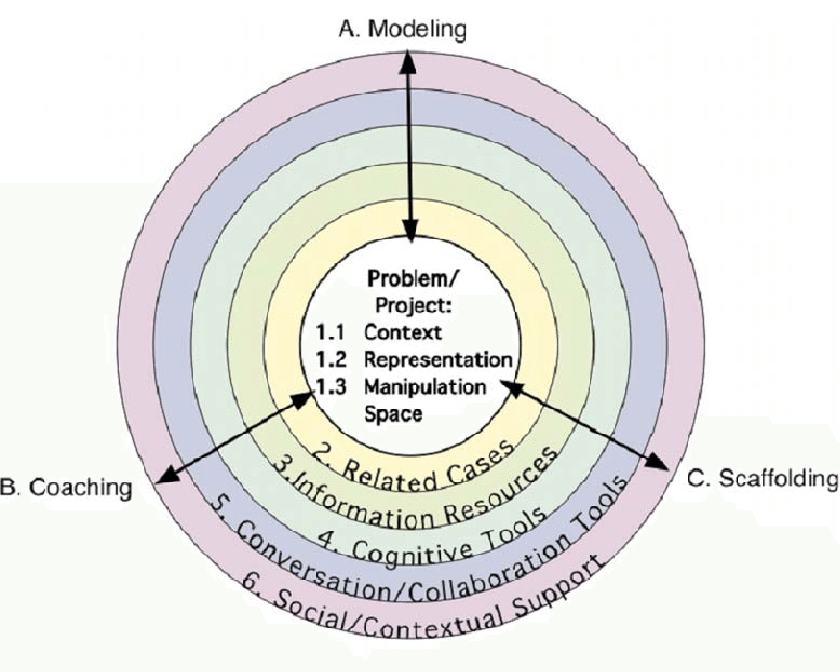Q.1 What are the salient characteristics of an expert’s knowledge structure? How is an expert’s memory, thinking, reasoning, and problem solving, etc. different from those of a novice. Why? Can you share an example about a situation when an expert differs from a novice in a specific task or situation?
This week’s readings are a familiar set of information for me. I went through these chapters when I was in New York. There are evident differences between the approaches of experts and novices. For me, the experience and long-term association with a job make people experts. Experts have great ability to represent knowledge. The main characteristic that makes experts different from the novices is that experts can very effectively reduce cognitive load and can use computational methods successfully. Experts can recollect the information in such a way that it can be productively used while performing certain tasks. The more experience the experts gain, the more expert they become in chunking the information.

Experts can handle complexity very well. They can make chunks of larger information, divide that information into several steps, form a unified routine that helps them in handling complexity and to solve different problems. During this entire process of solving problems, their responses are quick, and they can easily do more. Experts usually rely on their pre-existing knowledge, the context in which the data is presented, experience, knowledge, and expectations. The example of playing chess is famous to find out the differences between experts and novices. Knowledge structure plays a crucial role in the performance of an expert by which experts can recall many patterns by briefly looking at the chess board. On the other hand, novices cannot do that. The ability of experts to store and recall information makes them perform better in playing chess.
Experts can successfully filter the relevant information. They contain an overall picture in their minds and can discriminate between relevant and irrelevant information. Experts are good at the ability to selectively filter relevant information. While a novice makes sense of the information, the expert will jump to the critical information within a short duration of time. So, they can perform quickly and efficiently.
Experts have tremendous problem-solving skills. They can form the representation of a problem immediately. “Experts’ ability to reason and solve problems depend on well-organized knowledge that affects what they notice and how they represent problems” (Bransford et al., 2000). This representation helps them find solutions to that problem easily. They can find meaningful patterns and features of a given knowledge. They exercise better techniques and meta-skills. These meta-skills in experts make them different from novices because they can monitor, adjust, and analyze one’s thinking, learning, and knowledge during problem solving.
Q.2 What is knowledge transfer? How does knowledge transfer occur? Why is transfer important? Can you share an example of learning transfer? How can design a learning environment with the intention of facilitating learning transfer?

Knowledge transfer is a way of sharing or disseminating knowledge. “Transfer is always a function of relationships between what is learned and what is tested” (Bransford et al., 2000). Through knowledge transfer, we can solve various problems. Through this transfer, several solutions can be shared with one another that can help others to solve different issues. Knowledge transfer usually occurs through discussions with peers, professional trainings, Instructions, apprenticeship, seminars, workshops, social gatherings and much more. Knowledge transfer is extremely important for innovation, development, engagement, alignment, quick thinking, fast communication, clear constraints, direct feedback, internal improvements and to produce experts in society. The transfer of learning or knowledge is an aid to solve a problem and apply the steps to a different but related problem. Through this approach, knowledge is shared amongst the maximum number of people and they learners become effective members of society. The best example of transfer learning can be the knowledge gained while learning to ride a tricycle and apply that knowledge to ride a bicycle or a motor bike.
Q.3 What have you learned from these two chapters? What are the implications each chapter offers to help you design effective and impactful virtual learning communities or any type of learning communities (including face-to-face and hybrid)?

The implications from this week’s chapters suggest that designing effective learning environments is the need of the hour. It is crucial to design these learning environments keeping in view the following approaches in mind.
- These communities should be learner-centered, knowledge-centered, assessment-centered (including feedback and revision), and community-centered.
- There should be training sessions for the novices and the beginners
- These communities should be designed keeping in view the mindsets of people
- Proper strategy is the key to success. The designing of these communities should be strategic.
- Virtual communities should be technologically advanced.
- They should be flexible, but members should be kept accountable.
- The design of the communities should be open for experimentation and exploration.
- The authentic and relevant presence of experts is much needed.
- The data in these communities should be used to keep getting better and deliver more.
- The goal of the communities should be the promotion of learning.
References
Bransford, J. D., Brown, A. L., & Cocking, R. R. (2000). How people learn (Vol. 11). Washington, DC: National academy press.